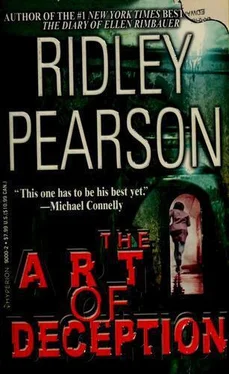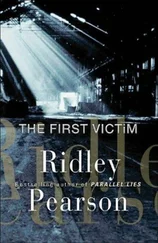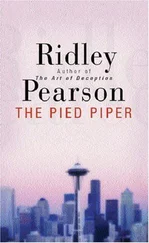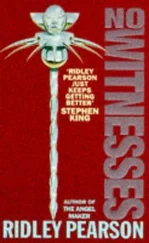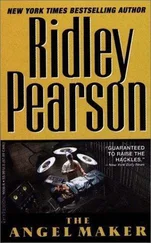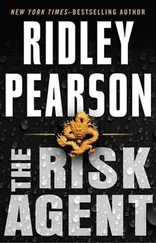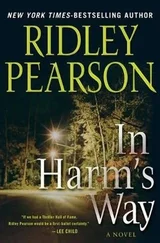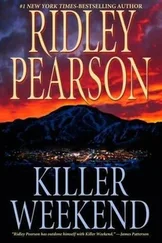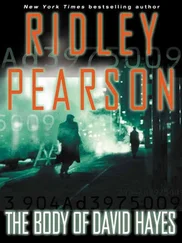Ridley Pearson - The Art of Deception
Здесь есть возможность читать онлайн «Ridley Pearson - The Art of Deception» весь текст электронной книги совершенно бесплатно (целиком полную версию без сокращений). В некоторых случаях можно слушать аудио, скачать через торрент в формате fb2 и присутствует краткое содержание. Жанр: Триллер, на английском языке. Описание произведения, (предисловие) а так же отзывы посетителей доступны на портале библиотеки ЛибКат.
- Название:The Art of Deception
- Автор:
- Жанр:
- Год:неизвестен
- ISBN:нет данных
- Рейтинг книги:3 / 5. Голосов: 1
-
Избранное:Добавить в избранное
- Отзывы:
-
Ваша оценка:
- 60
- 1
- 2
- 3
- 4
- 5
The Art of Deception: краткое содержание, описание и аннотация
Предлагаем к чтению аннотацию, описание, краткое содержание или предисловие (зависит от того, что написал сам автор книги «The Art of Deception»). Если вы не нашли необходимую информацию о книге — напишите в комментариях, мы постараемся отыскать её.
The Art of Deception — читать онлайн бесплатно полную книгу (весь текст) целиком
Ниже представлен текст книги, разбитый по страницам. Система сохранения места последней прочитанной страницы, позволяет с удобством читать онлайн бесплатно книгу «The Art of Deception», без необходимости каждый раз заново искать на чём Вы остановились. Поставьте закладку, и сможете в любой момент перейти на страницу, на которой закончили чтение.
Интервал:
Закладка:
“As long as I’m involved, I’d appreciate it if we did things legally, as unsettling to you as that may be.”
“So now you’re going to reform me?”
She looked around at the rock walls, the Gothic arches overhead. “Seems as good a place to start as any.”
Fifteen minutes later, both doors hung open. The minister was a bald man with an oily complexion, a slight frame, and canti-levered eyebrows that looked sewn onto his forehead. He had a quiet but sunny disposition, as if being rousted at midnight was part and parcel of his job. Perhaps it was.
One of the doors led to storage, a massive masonry cave nearly rectangular in shape, lit by bare bulbs and strewn with cobwebs and layers of dust. Wooden chairs were stacked haphazardly; red velvet seat cushions, the fabric torn open by home-steading mice, leaned as unstable towers; a leather chair had its covering peeled back from the arms like skin from a bad burn.
There were candlesticks and file cabinets, steamer trunks and even an abandoned pulpit canted to one side so that its cup runneth over. Old rust-covered chains were bolted to the far wall. Matthews commented on the enormity of the space-it looked to be sixty feet deep or more. LaMoia strategically wormed his way inside, discovering a tunnel with a low ceiling that led to a former wine cellar, also long since abandoned. The dust alone announced that no bums had trodden here.
Matthews picked her way through the rubble, following him.
Together they faced a bricked-over stone arch. In a soft voice LaMoia said, “We want to be wherever that once led.”
The minister overheard his comment and informed them that to his knowledge any doorways and windows that had once communicated with what had then been a sidewalk, a hundred years earlier, had all been brick-and-mortared closed. “Permanently sealed” was how he put it.
A storyteller by nature, he held them captive with a tale about an old rum-running smugglers’ tunnel said to have run up Skid Row-now Yesler Way-leading from the waterfront and connecting to several churches and speakeasies that predated the Great Depression and Prohibition. “They connected the old smuggling tunnel to these underground sidewalks, where they had quite the black market going for themselves.”
LaMoia gave the man only half an ear, impatient to open the second door. When it was finally opened, the other door led to a long underground hallway, off of which was a music room, a small library with dehumidifiers running, a vestments closet, and several more stone-walled rooms dedicated to church administration and service utilities. They took their time to study each in turn, searching for hidden access to the Underground, which from the discovery of the peepholes, and the minister’s stories, seemed likely to exist.
While inside what amounted to an oversized custodial closet, a room filled with steel pipe and electric water heaters, LaMoia silenced Matthews and the minister-who, once started talking, proved hard to quiet-and pressed his ear to the cold, sweating stone. Leaning away from the wall, he motioned for Matthews to listen.
“Tell me what you hear,” he whispered.
Matthews pressed up against the damp chill, her face then approaching the color of the whitewashed stone. “Voices,” she muttered. “Men’s voices.”
Voices in the Dark
The beat-up red door, caked and cracked with generations of paint, hid behind a Dumpster down a dead-end alley a half block from the church’s west wall. LaMoia might have missed seeing it had a street person not materialized out of thin air. But with this man’s appearance in the alley where a moment before there had been no one, the detective sought an explanation. He and Matthews rolled the Dumpster aside, and LaMoia turned the rust-encrusted doorknob.
The door opened behind the complaint of its hinges. The smell of human piss wafted up, stinging his eyes. He covered his face and turned away.
“Let’s call for backup,” he said. “This could get ugly.”
Thirty minutes later, shortly after one in the morning, LaMoia led the way down a set of steep, rickety, wooden stairs into ripe, musty air, guided only by the narrow beam of a penlight. Matthews followed closely on his heels, and behind her, four uniformed patrolmen, two with nightsticks in hand, two brandishing handguns. Cobwebs, pipes, wires, and valves. “Lions and tigers and bears,” LaMoia whispered over his shoulder through the pitch-black. The comforting sounds of the city faded, lost overhead, suddenly translated into a deep, penetrating rumble that rattled one’s chest.
Matthews reached out and took hold of his deerskin jacket, a child with mommy’s apron. She let go then, LaMoia pretending not to have noticed.
His penlight shone barely five feet ahead, illuminating broken wooden planks that had once been a sidewalk. Together they sidestepped the debris, following along the wall of a perfectly preserved brick building, the windows with much of the glass still in place. LaMoia directed the beam through one of these windows: piles of broken furniture and junk, untouched for years. A time warp. They passed a barber shop and a millinery, the hat racks still in place.
Twenty yards later the wall changed from brick to stone, and LaMoia used sign language-forming his index fingers into a cross-to indicate that he believed this was the church wall.
Matthews concurred with a nod, then pointed out the narrow arrows of white light that crossed the sidewalk ahead.
As they slowed, the dust from behind them carried forward and illuminated those shafts of light even brighter. Five white beams in all.
Cupping his hand to her ear he said that someone had to look inside and that it shouldn’t be him. Matthews agreed and stepped forward, placing her eye to the breaks in the wall.
Pulling her eye away, she confirmed, “It’s the showers,” her heartache obvious even through a whisper.
The smell in the air was of peppermint, sour and all too human. The voyeurs had ejaculated onto the walls and the sidewalk.
Matthews covered her mouth, suddenly nauseated. A hundred crime scenes or more, and this was the first time she’d felt ready to vomit.
Suddenly the four uniformed patrolmen pushed past them, a flurry of hand signals and quick preparation of their weapons.
LaMoia returned hand signals, taking charge, a silent orchestra-tion of the minutes yet to come.
She understood the urgency then: From up ahead and around the corner she heard the distinct and unmistakable sound of laughter.
They walked inside what amounted to a tall tunnel, the church’s basement wall, once at street level, to their right, the mortar-and-stone retaining wall, built to enclose the city block and elevate the street a century earlier, to the left. Overhead, dust-covered wires, encrusted conduits, rusted water pipes, and gas lines had been added haphazardly over the years, tangled like veins in a limb. A halo of purple light fanned out from what had once been a skylight in the overhead sidewalk, back during the decades of reconstruction, when the two sidewalks, the two different street levels, had been forced to coexist, one of the old Seattle, the other representing improvement and change. The din of drunken male voices grew more present, a pack of wild dogs encountered in the forest.
LaMoia, the hunter, cut ahead of the uniforms and peered around the corner. He held up four fingers. To Matthews, it sounded more like ten. Adrenaline cocktails for all, charging her system with a menthol-like chill and drying her throat. LaMoia articulated a series of hand signals to the patrolmen and she envied him his cool. She felt lucky: He was the cop you wanted at your side in situations like this. He thrived on adversity. She recalled his telling her that she was safe while under his care, and though loath to admit it, she knew this was true, accepted it as fact.
Читать дальшеИнтервал:
Закладка:
Похожие книги на «The Art of Deception»
Представляем Вашему вниманию похожие книги на «The Art of Deception» списком для выбора. Мы отобрали схожую по названию и смыслу литературу в надежде предоставить читателям больше вариантов отыскать новые, интересные, ещё непрочитанные произведения.
Обсуждение, отзывы о книге «The Art of Deception» и просто собственные мнения читателей. Оставьте ваши комментарии, напишите, что Вы думаете о произведении, его смысле или главных героях. Укажите что конкретно понравилось, а что нет, и почему Вы так считаете.
